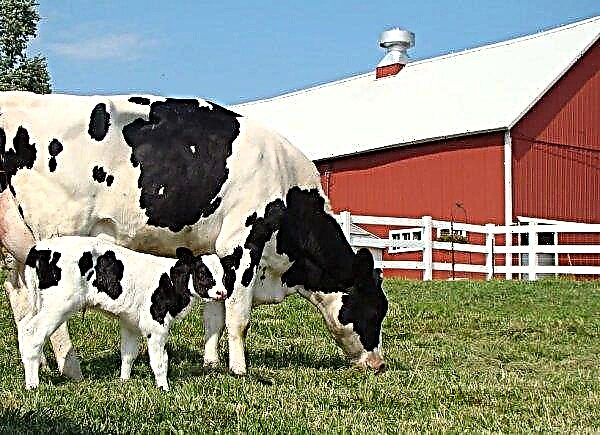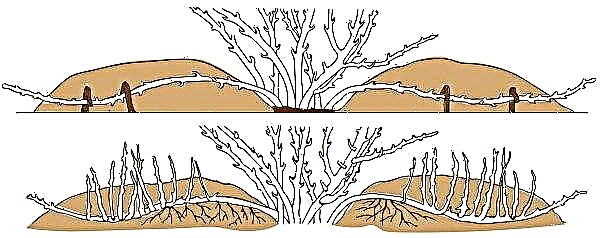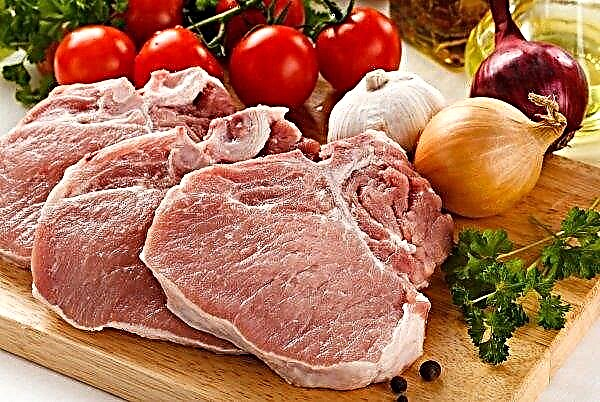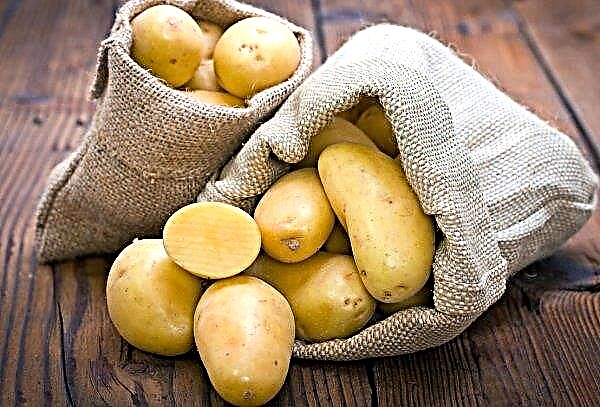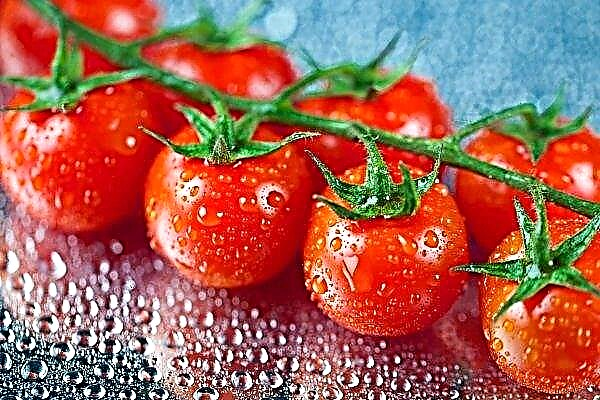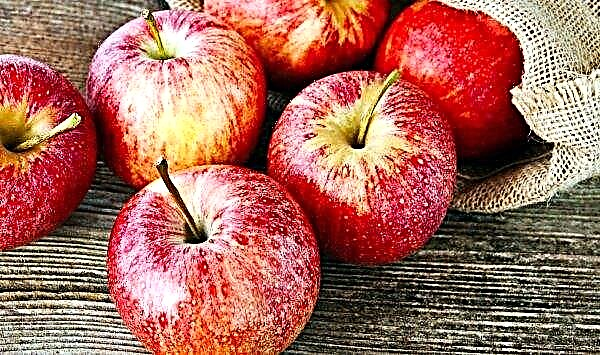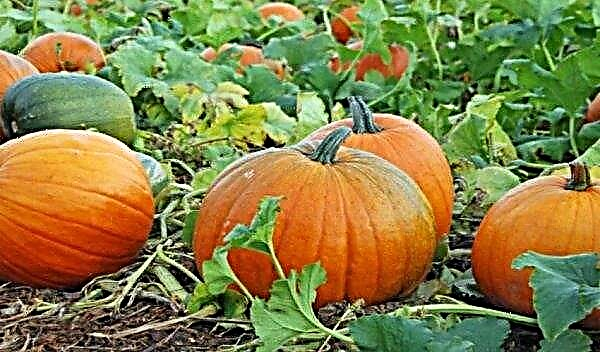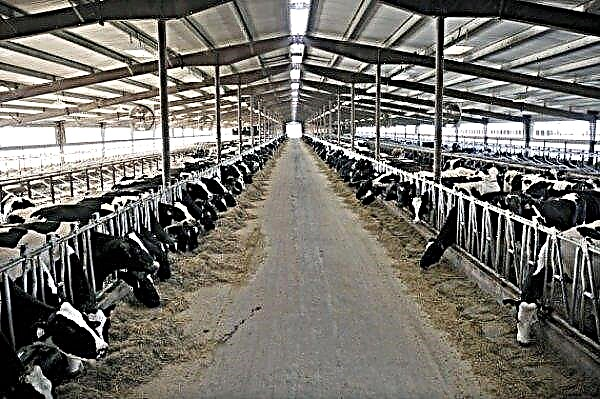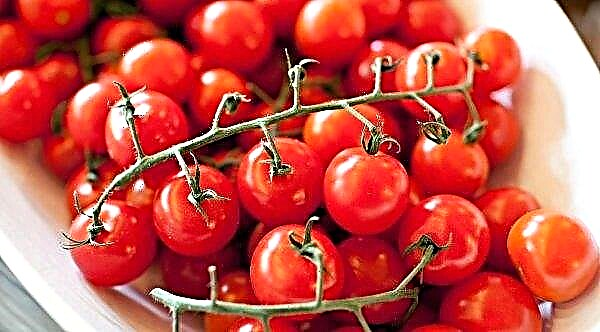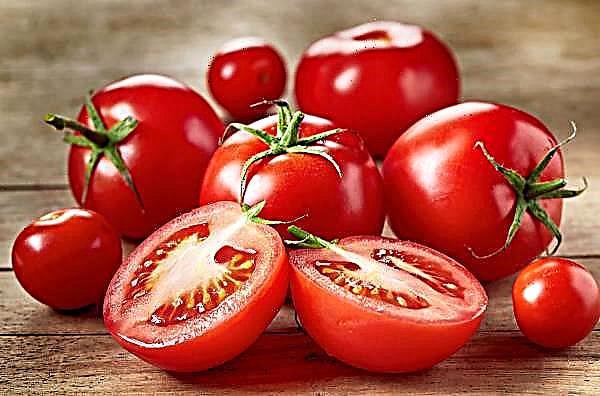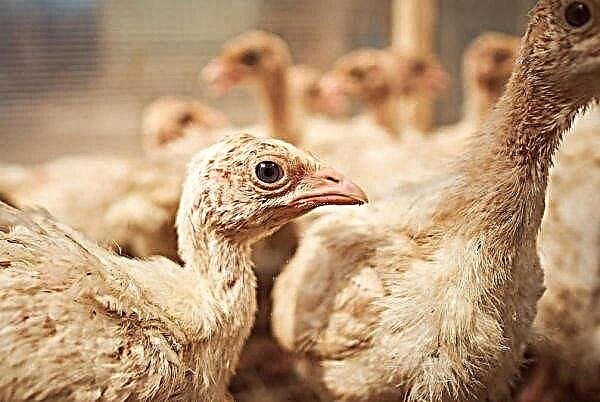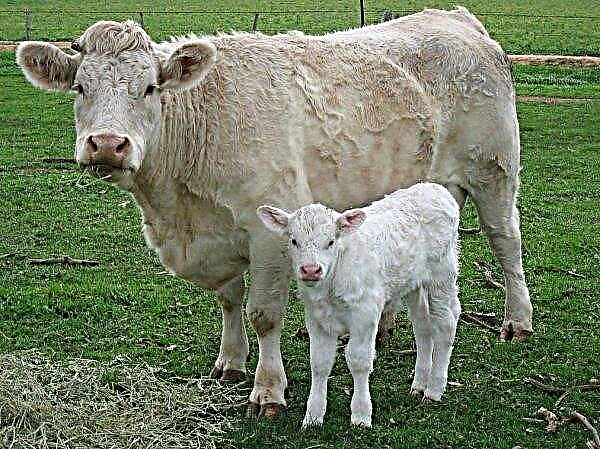Growing apricots in Siberia is a very real task, although for its implementation it is necessary to choose the right variety. The history of growing heat-loving fruit trees in extremely cold conditions in Russia has been going on for about a century, during which time scientists managed to develop a fairly large number of zoned varieties, so the choice today is quite large. One of the options worthy of the closest attention is the apricot Sibiryak Baykalova, which will be discussed below.
The history of selection of varieties Sibiryak Baykalova
The author of this frost-resistant variety is the famous Soviet breeder Ivan Leontyevich Baikalov, who devoted half a century of his life, on a voluntary basis, to the idea of promoting apricots in the Siberian regions, which, I must say, few people initially believed. Thanks to the efforts of this scientist, in addition to the Siberian Baikalov, such well-known apricot varieties as the Golden Siberian, East Siberian, Sayan, Mountain Abakan, Pride of Khakassia, Gift of nature also appeared.
However, if most of the apricot varieties recommended for cultivation in the Urals and Siberia were obtained by crossing fruit trees of the species Prinus armeniaca (common apricot) with its local relative, Prinus sibirica (Siberian apricot), which has very high winter hardiness, but at the same time having almost inedible fruits then Siberian Baikalov is not a hybrid, but a random seedling. In its genetic formula, of course, there is the line of Prinus sibirica, an apricot pollinator grown in Altai, in a private garden.Did you know? Achievements of Ivan Leontyevich Baikalov in the field of creating Siberian apricot varieties in 2010 were marked by entering in the Russian Book of Records.
 Work to consolidate the long-term result of free pollination was carried out on the basis of two scientific institutions - the Scientific Research Institute of Agrarian Problems of Khakassia and the Far Eastern Agricultural Research Institute (Khabarovsk Territory).
Work to consolidate the long-term result of free pollination was carried out on the basis of two scientific institutions - the Scientific Research Institute of Agrarian Problems of Khakassia and the Far Eastern Agricultural Research Institute (Khabarovsk Territory).In 2002, 12 years before the death of the author, the variety named after him was included in the State Register of Breeding Achievements of the Russian Federation and was recommended for cultivation in the East Siberian region of Russia - in Khabarovsk and Krasnoyarsk, Khakassia, Transbaikalia, Yakutia, Buryatia, Tuva, and also Irkutsk region.
Description of the variety and characteristics of Sibiryak Baykalova
As befits Siberian apricots, Siberian Baikalov forms a low, up to 3.5 m tree with a spreading and not too thickened, but well-leafy spherical crown, up to 4 m in diameter. The strength of the variety is characterized as intense at a young age, but after the tree reaches maturity, the annual growth rate decreases.
The color of the tree bark is dark red, the skeletal branches are long and thick, the buds are medium-sized, the arrangement is bouquet-shaped, on the annual shoots three pieces each (fruit on the sides and growth in the center), on older branches two or more. The angle of deviation of the kidney from the shoot is significant. The flowers are medium to large; the color is white or light pink.
The flowers are medium to large; the color is white or light pink.
Leaves of medium size, dark green on the front side and lighter on the back (characteristic of Prinus armeniaca). The leaf shape is oval with a tapering and sharpening apex, the stalk is short, brightly colored.
Fruit Characteristic:Did you know? The most unusual of all apricots is rightly considered black, which is a random hybrid of apricot and cherry plum. The skin color of such fruits is more reminiscent of plum in color, but for the traditional orange fruits of Prinus sibirica, even the purple or dark red color is not so characteristic that the fruit is still called black.
- sizes - quite large, from 25 to 37 g, depending on the age of the tree, its care and rationing of the crop;
- the form - rounded and slightly flattened;
- skin color - pale orange with an odd blush;
- pubescence - small;
- pulp color - Orange;
- pulp structure - moderately dense and juicy;
- percentage of solids, sugar and acid — 16/8,3/2,4;
- percentage of ascorbic acid — 0,81;
- pectin percentage — 0,57;
- taste characteristics - not bad, sweet taste with sourness, a fruity aroma;
- tasting assessment - 4.8 points on a five-point scale;
- bone - small, easily detachable, edible kernel;
- the appointment - universal.

The flowering period of Sibiryak Baikalov falls at the end of the first - the beginning of the second decade of May. The crop reaches biological ripeness in late July or early August, which allows apricot to be classified as an early ripening variety. The tree enters the fruiting phase already starting from the second or third year of life, when it reaches adulthood, it shows stable productivity within 20 kg from one tree. However, to ensure such a result, the correct forming pruning is necessary, as well as the presence of pollinators, since the variety does not differ in high self-fertility. In this capacity, it is best to use other varieties developed by I.L. Baikalov - Gorny Abakan, Sayansky, as well as Altai, etc.
However, to ensure such a result, the correct forming pruning is necessary, as well as the presence of pollinators, since the variety does not differ in high self-fertility. In this capacity, it is best to use other varieties developed by I.L. Baikalov - Gorny Abakan, Sayansky, as well as Altai, etc.
Advantages and disadvantages of the variety
- For a relatively short history of the variety, gardeners managed to appreciate the following advantages:
- high frost resistance of wood (up to -40ºС);
- the ability to quickly recover in case of freezing shoots;
- low growth power in adulthood, which eliminates the need for annual pruning;
- early entry into the fruiting phase;
- regular harvests;
- large-fruited, not characteristic of other Siberian varieties;
- early ripening;
- very good tasting qualities of fruits;
- good product characteristics, in particular, regular shape and uniform fruit sizes;
- crop keeping quality and its suitability for transportation;
- universal purpose of the fruit.
Important! The Sibiryak Baykalova variety is distinguished by high frost resistance, but low winter hardiness.
- However, Sibiryak Baykalov has some drawbacks. These usually include:
- relatively low yield indicators;
- a short period of winter dormancy, which leads to a high probability of freezing of fruit buds;
- increased risk of root neck crying;
- self-infertility;
- instability to changes in weather conditions;
- low immunity to diseases and pests.
These concepts need to be distinguished. Under frost resistance is understood the ability of a tree to withstand lowering of winter temperatures to significant limits, while winter hardiness is a broader concept. It also implies the resistance of young shoots and especially fruit buds to a sharp change in severe frosts and thaws, as well as to spring return frosts.
Rules for planting apricot Sibiryak Baykalova
Taking into account the above characteristics of the variety, in order for the tree to develop normally and tolerate the climate of Siberia that is not very favorable for fruit crops, it is very important to plant it correctly.
Timing and seat selection
Siberian Baikalov is specifically designed for cultivation in Eastern Siberia, and gardeners recommend strictly adhering to this principle of zoning. Thus, the tendency of a tree to root out the neck of the neck in the East Siberian region is less pronounced, since winters here, although severe, are characterized by stable weather and the absence of early snowfalls, unexpected thaws and snowfall on the ground that did not have time to freeze.
At the same time, in the Moscow Region and other central regions of Russia, where the climate would seem to be milder, apricot of this variety, with its short period of winter dormancy, is much more likely to freeze at the end of winter, when another thaw stimulates the tree to awaken, and subsequent frost will destroy the awakened kidneys. The same problem lies in the tree in Western and Southern Siberia. As for regions with a warm climate, it makes sense for them to choose more elite varieties of apricots, in addition in the south, trees are usually much more affected by fungal infections and pests, and Sibiryak Baykalova is very unstable in this regard. As for the recommended landing times, here should proceed from the general rules of zoning.
Important! Autumn planting of fruit trees has a number of undeniable advantages over spring, but it is not suitable for cold regions, since the risk of freezing in winter is higher than the possible difficulties with spring rooting.
Plant Siberian Baikalov is necessary in the springwhen the earth has already warmed up enough, but at the same time the buds of the tree have not yet had time to wake up. Usually, a suitable period begins around mid-April or a little later, but in a changing climate, you should focus on current weather conditions.
For a seedling, you need to choose the sunniest and most well-warmed place, which is maximally protected from sudden gusts of wind. The recommended composition of the soil is loam or sandstone: the soil should be light, loose and fertile, close to neutral acid-base balance.
Site preparation and planting material
The apricot planting area is best prepared in the fall. First, the selected place should be thoroughly cleaned of debris and organic residues, then you can begin to prepare the pit and soil mixture.
The dimensions of the pit directly depend on how high quality and suitable in all basic parameters for the apricot is the soil on the site. The minimum dimensions of the recess - 70 x 70 cm - are used if the original soil composition tends to the ideal. In all other cases, the pit needs to be dug approximately 30% deeper and wider, after which it is partially filled with specially prepared earth for these purposes.
The general principles for adjusting soil composition are as follows:
| Parameter: | Component Add To Enhance | Downgrade component |
| Acidity: | Peat, acid (malic or acetic) | Limestone flour, chalk, eggshell |
| Structure: (lightness) | Sand, Moss Sphagnum | Clay |
After the main adjustment work with the soil has been completed, the soil must be enriched with organic and mineral fertilizers.
For this purpose, based on one seedling, the following must be added to the ground:
- compost, rotted manure or humus - 2-3 buckets;
- superphosphate - 150-350 g;
- vermicompost - 400-500 g;
- potassium sulfate or wood ash - 100-150 g or 400-500 g, respectively.

However, it should be noted that the best option for Sibiryak Baikalov, the landing is according to a method specially developed by the author of this variety, as well as other well-known gardeners Chuguev and Zhelezov specifically for Siberian apricots. This method does not involve the preparation of a hole at all; instead, a tree is planted on a hill.
When using this technique, such a hill is also best prepared immediately before planting, otherwise by the spring its edges will be washed out by meltwater, and all work will need to be done anew. But it makes sense to prepare the soil mixture for later use in the fall, since manure and other nitrogen fertilizers in the soil should not be “fresh”, otherwise you can burn the root system of a young tree.Did you know? Americans are so fond of apricots that they even dedicated a separate holiday to them, which for some reason is celebrated in the winter of February 9th.
 Seedlings are best purchased from proven fruit tree nurseries., it is very important that the institutions are located as close as possible to the final point of planting: such a tree will be much easier to survive the stress of the transplant and gain a foothold in a new place.
Seedlings are best purchased from proven fruit tree nurseries., it is very important that the institutions are located as close as possible to the final point of planting: such a tree will be much easier to survive the stress of the transplant and gain a foothold in a new place.
Ideal seedling age - 1 or 2 years (the height of such a tree is usually 100-150 cm). Directly before planting, it is recommended to soak the plantby immersing its roots and approximately 30% of the stem in water for 24–48 hours. Then, the root system should be dipped into the prepared slurry from clay, water and manure, wait until the mixture dries slightly and then cut off the tips of the main root processes to stimulate their intensive development and division.
The process of planting young seedlings
Planting a seedling according to the methods of Baikalov, Zheleznov and Chuguev involves the following algorithm of actions:
- From a previously prepared soil mixture mixed with all the necessary fertilizers, form and compact the hill. The height of the embankment should be at least 50 cm, diameter - 2–2.5 m.
- Dig a hole on the top of the hill, the total volume of which should be approximately 30% of the size of the root system of the seedling.
- Pour water abundantly with at least 1–2 buckets. The water should be left standing and warmed up to a warm temperature so that the roots of the tree do not experience stress from hypothermia.
- Set the tree in the pit, orienting it to the cardinal points in the same way as it grew in the nursery (this point must be checked with the seller, although usually grafting from seedlings of fruit trees is done on the south side).
- Having spread the root processes of the seedling and directing them in different directions, carefully begin to sprinkle the pit with a nutritious soil mixture, constantly interrupting for tamping (there should not be air pockets in the roots).

- After the pit has completely fallen asleep, the apricot root neck should remain on the surface, in no case should it be buried in the ground.
- After planting, the tree is not watered. Also, one should not form a so-called “collar” around a seedling - a site for holding water that is enclosed by an earthen rampart around a circle. Instead, on the contrary, you need to compact the earth around the tree so that immediately from the trunk a slope begins at an angle of about 45 ° (the more snowy the winters in the region are and the higher the probability of frost and thaw changes, the more steep the slope should be).
- To consolidate the relief of the hill immediately after planting, it is recommended to sow its slopes over the entire area with lawn grass, it is best to purchase mixtures based on the shoot of the field mowing, it holds the soil well and does not compete with the root system of the tree. The same grass carpet subsequently protects the trunk circle from weeds and will serve the apricot as a natural defense against the cold.
Video: Apricot. Landing instruction
Care and protection against diseases and pests
When caring for the Siberian Baikalov, one must be guided by the standard rules that are relevant for all varieties of this tree, however, it is very important to keep in mind that growing apricots in Siberia has some fundamental differences from the agricultural technology used in the south.
The main features of Siberian apricot care are as follows:Did you know? Marzipan is a famous confectionery product, which, as you know, is made from almond flour. However, some enterprising housewives instead of expensive almonds use apricot kernel kernels to make marzipan, and the result is quite authentic.
- Limited watering. The main danger that threatens the fruit tree in the conditions of a short and cool summer is not a possible drought, but a possible stagnation of water in the roots.Apricots traditionally belong to drought-resistant crops, without regular watering, they are able to bear fruit even in really hot regions, but an excess of moisture in the soil leads, at a minimum, to cracking of the fruits, and at the very least to rotting of the root neck and subsequent death of the tree.
- Controversial is the question of the advisability of mulching the surface of the trunk circlebecause this procedure helps retain moisture in the soil. For regions with an arid climate and snowless winters, mulching can be used, but in areas where the Siberian Baikalov is usually grown, this method is better not to apply.
- Wrap a tree for the winter in order to protect from frost should not be. The sap flow that began during the thaw, which is already very dangerous for this fruit tree, under the shelter increases the bark heating even more. This nuisance, in turn, blocks the exchange of nutrients between the aboveground part of the plant and the roots, as a result, apricots awakened in the spring dry up and die very quickly. At the same time, inexperienced gardeners often believe that the tree killed the frost and try to wrap seedlings even stronger next fall, while such an event in reality leads to an even more deplorable result.
Otherwise, caring for the Siberian Baikalov involves the implementation of three standard procedures - trimming, top dressing and preventative treatment.
As was said, the biological characteristic of the variety is the low growth rate in adulthood, therefore, supporting pruning is sufficient once every two years. The best time for this is the end of winter or the beginning of spring, when the sap flow has not yet begun.
Important! The more apricot is pruned, the better it bears fruit, and regular pruning favorably affects not only the number of fruits, but also their size.
Feeding a tree should begin two years after planting. Traditionally, the root fertilizer application procedures are carried out in spring (with emphasis on the nitrogen component) and in autumn (potash and phosphorus fertilizers). In addition, in the summer, at the time of planting the crop, it is possible to top-dress the tree with microelements such as boron, magnesium, sulfur, calcium, zinc, manganese, etc. In the same period, organic matter can be added to the slopes around the tree, under digging.
The required amount of fertilizer is inextricably linked with such a concept as a feed area. For the first 4–5 years, the root system of the tree does not extend beyond the tree-trunk hill, that is, the feeding area is 2.5–3 m². In the future, this parameter should be increased by adding 50 cm² to it every year.
The recommended volume of the main elements (per 1 m²) of the area is:
| Type of fertilizer: | Dose of application, g: |
| Organics (humus) | 4000 |
| Phosphorus | 8 |
| Potassium | 5 |
| Nitrogen | 6 |
Siberian apricots, unlike their southern counterparts, are rarely affected by diseases and pests, so many gardeners do not use pesticides at all to care for trees. However, the immunity of Sibiryak Baykalov to such problems leaves much to be desired, therefore, at least twice (in spring, at the stage of bud swelling and immediately after flowering) the tree is preferably treated with insecticidal, fungicidal and acaricidal preparations. For these purposes, you can use urea, iron or copper sulfate, Bordeaux mixture or modern biological agents - Fitoverm, Fitosporin M, Guapsin, Trichodermin, etc. If the tree, despite the measures taken, hit fungal infections (kleasterosporiosis, cytosporosis, phylosticosis, etc.) or pests (moth, leafworm, aphid, weevil, sawfly, fruit tick), more powerful tools are used for processing, for example:
If the tree, despite the measures taken, hit fungal infections (kleasterosporiosis, cytosporosis, phylosticosis, etc.) or pests (moth, leafworm, aphid, weevil, sawfly, fruit tick), more powerful tools are used for processing, for example:
| Fungicidal (antifungal) drugs | Insecticides (preparations against insect pests) | Acaricides (tick preparations) |
| "Speed" | Angio | Taurus |
| Chorus | Aktara | Hexoran |
| "Topaz" | Coragen | "Masai" |
| Fital | "Match" | "Blaster" |
Harvesting and storage
Sibiryak Baykalova is traditionally characterized as a variety with high fruit stamina, however, this indicator is a relative value. It is also very important to know that to extend the shelf life apricots should never be ripe unripe: unlike some other fruits, for example, plums, these fruits, although they can acquire the desired color and softness when stored at home, in this case will be significantly inferior in terms of biochemical composition to fruits of the same variety ripened on a tree.
Important! Any apricots should be considered as perishable fruits.
From this point of view, general recommendations about the possibility of storing the harvest of Sibiryak Baikalov in a cellar or refrigerator for 2-3 weeks do not seem very realistic. However, over the course of several days, apricots of this variety can still be preserved in marketable condition, subject to several important conditions:
- do not use fruits that have fallen to the ground for storage, even if they look completely whole;
- to harvest in dry weather;
- put apricots in flat boxes or cardboard boxes no denser than in three layers;
- when stacking and transporting the crop, avoid blows and shaking of the fruits - this very quickly leads to spoilage;
- every few hours to sort the collected stocks, immediately removing specimens that have become soft and, moreover, that have begun to rot or leak.

It makes sense to use all of the above recommendations if you want to use the crop fresh. Apricots are best sent for processing directly on the day of collection or, in extreme cases, the next day.
The high sugar content in the fruits of Sibiryak Baikalov makes them equally suitable for preparing any dishes and preparations - From the filling for pies to jams, compotes and jams. This variety is less suitable for squeezing juice, but it is quite possible to dry it.Did you know? Dried apricots are apricots, dried, pitted. However, this kind of fruit can be dried without prior violation of its integrity, in which case the resulting dried fruit will be called “apricot” or “whisper”, but if you put the kernel extracted from the kernel in the fruit before drying, you can correctly call the prepared delicacy “kaisa”.

For scavengers and out of shape fruits the best direction of use is the preparation of homemade wine or stronger spirits, for example, an analogue of Armenian apricot (the so-called alcohol aged in oak barrels, obtained by distillation from fermented apricot juice).
Apricot Sibiryak Baykalova - one of the best varieties specifically designed for cultivation in Siberia. Compared with the usually small-fruited, nondescript and almost tasteless fruits that characterize most winter-hardy fruit trees, this variety is distinguished by rather large and very sweet apricots, which, moreover, are very well stored. There are certain shortcomings in Sibiryak Baykalov, but, in general, they are quite easily leveled by proper landing and competent agricultural technology.


